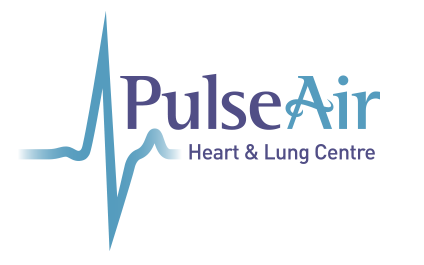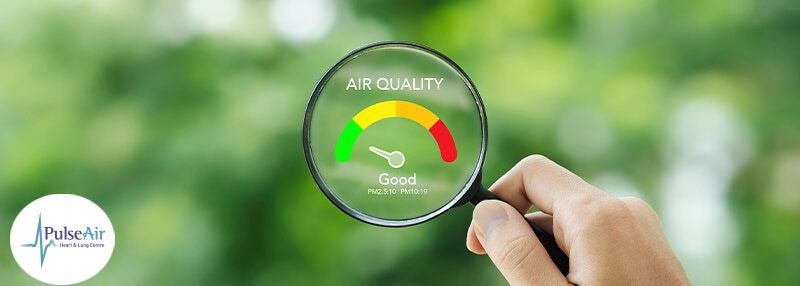Air quality plays a major role in your family’s health, especially for children, older adults, and anyone living with asthma, COPD, heart disease, or other chronic conditions. In Alberta, the Air Quality Health Index (AQHI) is a simple, reliable tool that helps you understand how clean or polluted the air is, and what steps to take to stay safe.
Whether you're planning a walk with your kids, caring for an aging parent, or managing a respiratory condition, knowing how to read the AQHI can help you make informed decisions to protect your lungs and overall well-being.
What Is the AQHI?
The Air Quality Health Index (AQHI) is a national scale developed by Health Canada to communicate the health risks associated with air pollution. It ranges from 1 to 10+, with higher numbers indicating greater health risks.
The AQHI is calculated using three key pollutants:
- Ground-level ozone – Common in summer, formed when sunlight reacts with emissions from vehicles and industry.
- Fine particulate matter (PM2.5) – Tiny particles from smoke, dust, and exhaust that can penetrate deep into the lungs.
- Nitrogen dioxide – Released by vehicles and industrial activity, especially in urban areas.
How to Read the AQHI
The AQHI is colour-coded and divided into four risk levels:
|
Risk Level |
AQHI Range |
What It Means |
|
Low Risk |
1–3 |
Air quality is good. Most people can safely enjoy outdoor activities. |
|
Moderate Risk |
4–6 |
Sensitive groups (children, seniors, people with asthma, COPD, or heart disease) should consider limiting prolonged outdoor activity. |
|
High Risk |
7–10 |
Everyone should reduce strenuous outdoor activities. Vulnerable groups should stay indoors. |
|
Very High Risk |
10+ |
Avoid outdoor activities. Stay indoors, keep windows closed, and use clean air filters if possible. |
You can check the AQHI for your community using:
- The WeatherCAN app (free from Environment Canada)
- Environment Canada’s AQHI map
Why It Matters for Your Lungs and Loved Ones
Poor air quality can affect everyone, but it’s especially harmful for:
- Children, whose lungs are still developing
- Older adults, who may have reduced lung capacity
- People with chronic conditions, such as asthma, COPD, heart disease, or diabetes
Exposure to polluted air can trigger or worsen:
- Coughing, wheezing, or shortness of breath
- Chest tightness or excess mucus
- Fatigue, headaches, or dizziness
Long-term exposure may also increase the risk of respiratory infections and cardiovascular complications.
How to Protect Your Family
Here are practical ways to reduce exposure and protect your lungs on days when air quality is poor:
Make AQHI Part of Your Daily Routine
Check the AQHI each morning, just like checking the weather. If the index is high, plan indoor activities or adjust your schedule.
Limit Outdoor Time
Avoid jogging, biking, or yard work when the AQHI is above 6. Encourage children to play indoors and reschedule outdoor events if needed.
Create a Clean Indoor Environment
- Use HEPA filters in your home or workplace
- Keep windows and doors closed during high-risk days
- Avoid burning candles, incense, or using wood stoves
- Consider using an air purifier in high-traffic or shared spaces
Wear a Mask Outdoors
On smoky or polluted days, a properly fitted N95 or KN95 mask can help reduce exposure to fine particles. Cloth masks are less effective for air pollution.
Support Vulnerable Family Members
Help seniors or loved ones with chronic conditions monitor symptoms, adjust medications as advised, and avoid unnecessary outdoor exposure. Keep emergency inhalers or medications accessible.
Additional Tips for Albertans
- Wildfire smoke is a growing concern in Alberta. During wildfire season, AQHI levels can spike quickly. Stay informed with local alerts and consider creating a “clean air room” in your home.
- Indoor air quality matters too. Consider testing for radon, a naturally occurring gas in Alberta that can affect lung health over time.
Breathe Easier with PulseAir
At PulseAir Heart & Lung Centre, we help Albertans understand and manage their respiratory health. If you or a family member are experiencing symptoms related to poor air quality, book an appointment with our specialists for expert guidance and care.
We offer:
- Pulmonary consultations
- Lung function testing
- Asthma and COPD management
- Education on air quality and respiratory protection
Book your appointment today and take control of your lung health.
Reach Out to PulseAir Heart & Lung Centre Today


